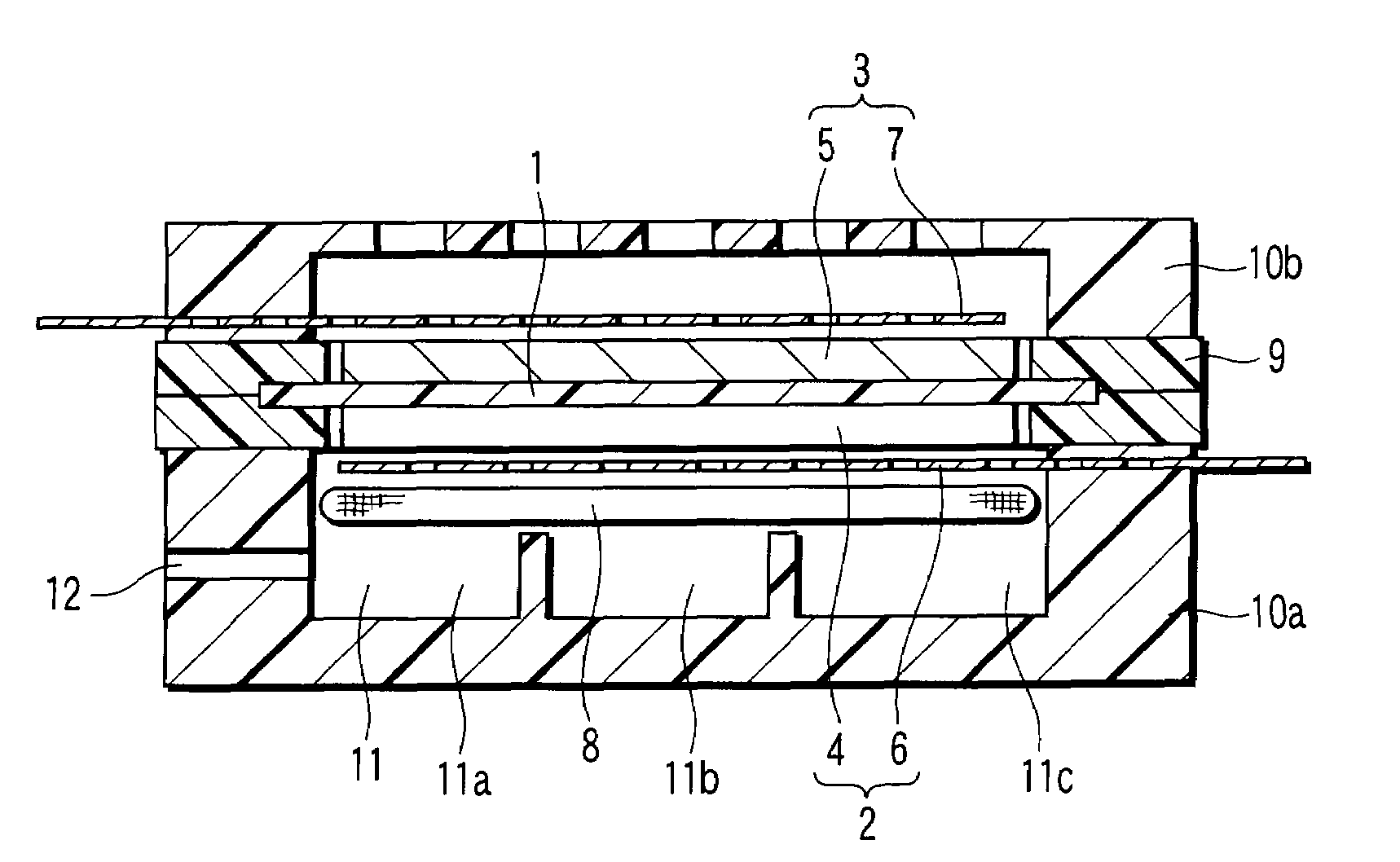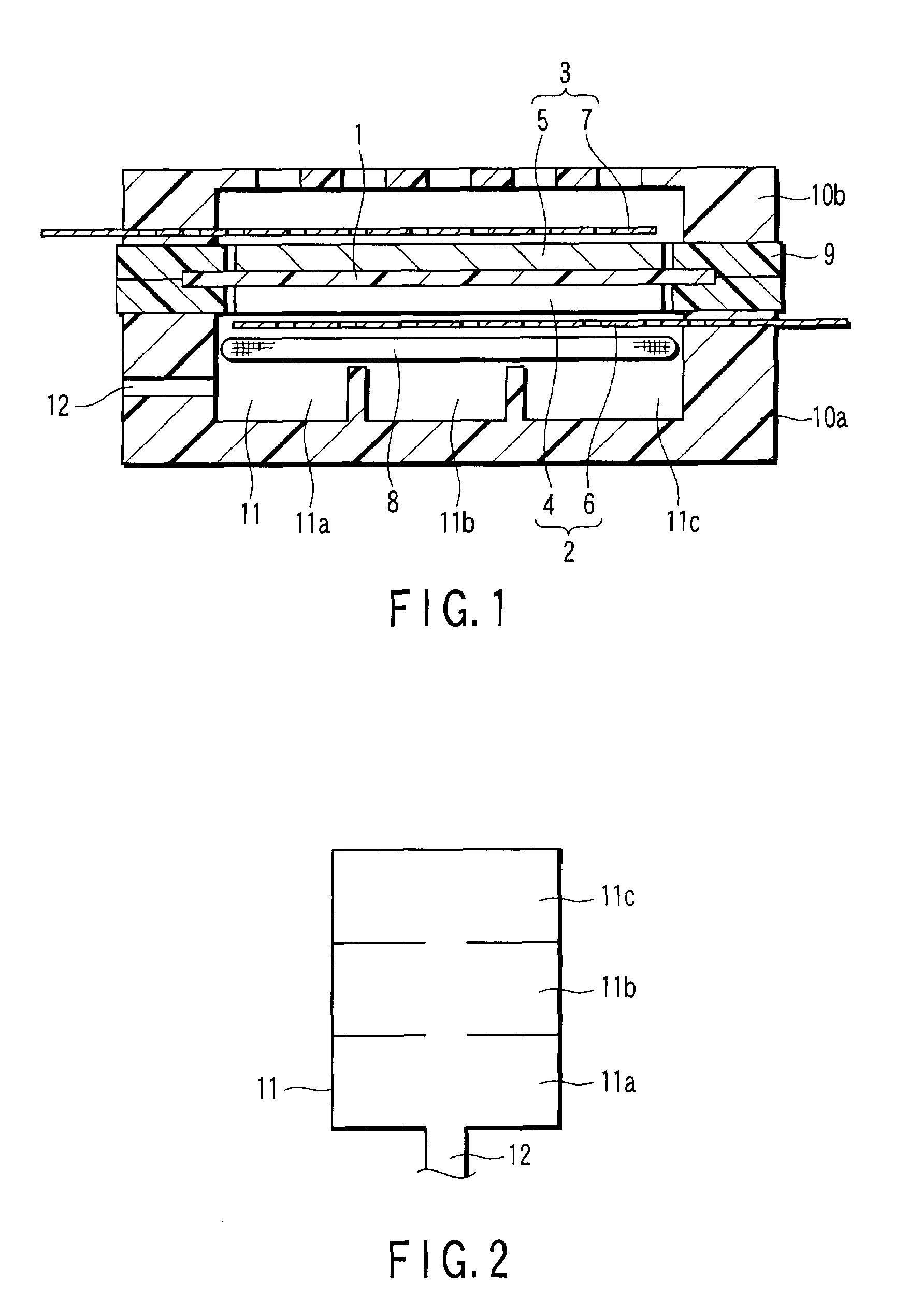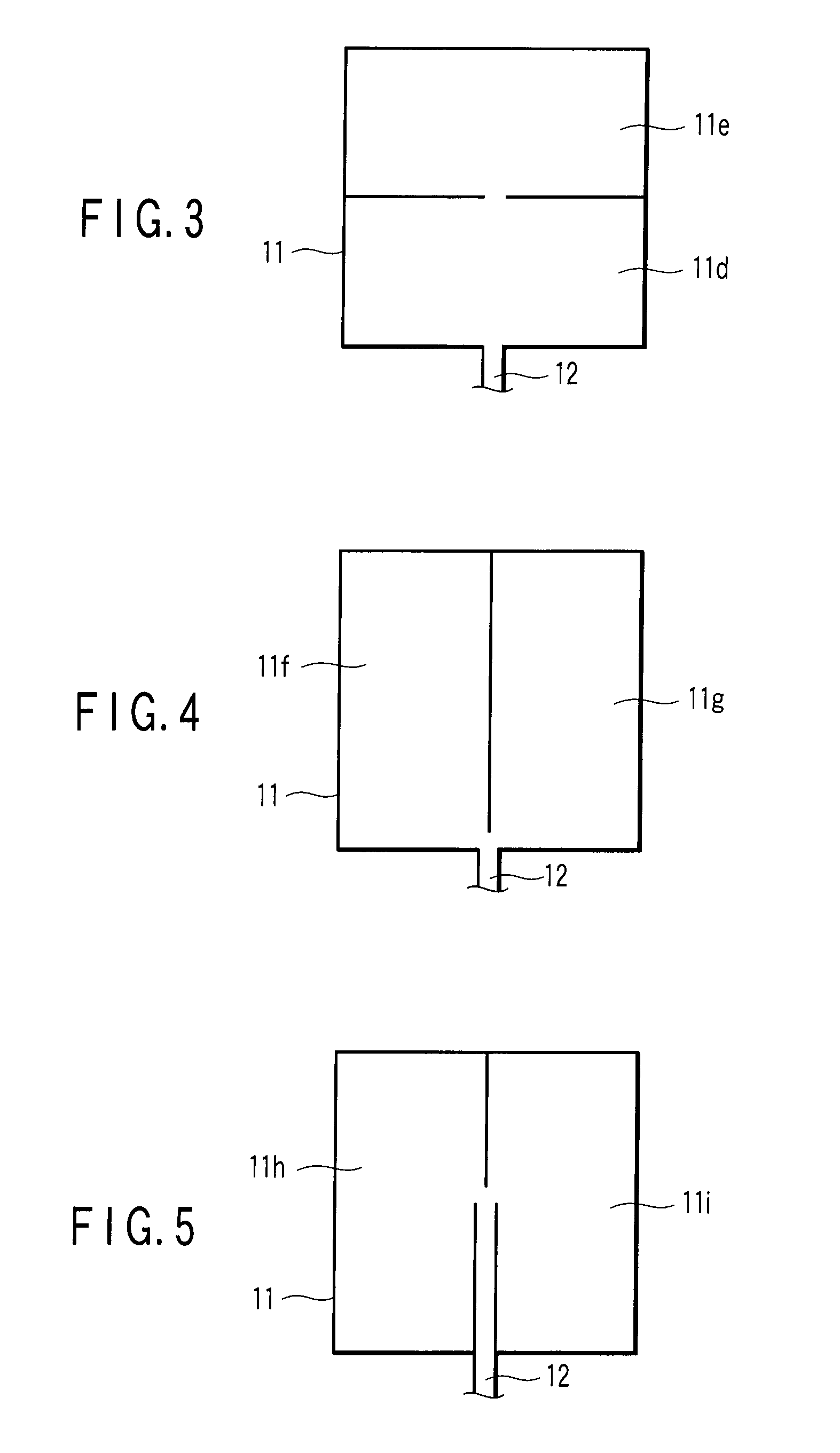Fuel cell
a fuel cell and cell technology, applied in the field of fuel cells, can solve the problems of reducing output, difficult to fix the attitude during use, and insufficient output characteristics, and achieve the effects of reducing the imbalance of distribution, enhancing output characteristics, and increasing the life of cells
- Summary
- Abstract
- Description
- Claims
- Application Information
AI Technical Summary
Benefits of technology
Problems solved by technology
Method used
Image
Examples
Embodiment Construction
[0048]FIG. 1 (sectional view) shows a fuel cell according to an embodiment of the invention. In the figure, reference number 1 denotes a solid electrolyte membrane, reference number 2 a fuel electrode, reference number 3 an air electrode, and reference number 11 a fuel tank.
[0049]A membrane electrode assembly (MEA) as an electromotive section comprises a solid electrolyte membrane 1, and a fuel electrode 2 (anode) and air electrode 3 (cathode) stacked on both sides of the membrane. The fuel electrode 2 includes an anode catalyst layer 4 and fuel electrode collector 6. The air electrode 3 includes a cathode catalyst layer 5 and air electrode collector 7.
[0050]The anode and cathode catalyst layers 4 and 5 are formed of carbon paper coated with a catalyst. The catalyst-coated surface of the carbon paper is thermocompression-bonded to the solid electrolyte membrane 1. The catalyst layers are obtained, for example, as follows: A perfluorocarbon sulfonic acid solution serving as a proton ...
PUM
| Property | Measurement | Unit |
|---|---|---|
| height | aaaaa | aaaaa |
| length | aaaaa | aaaaa |
| length | aaaaa | aaaaa |
Abstract
Description
Claims
Application Information
 Login to View More
Login to View More - R&D
- Intellectual Property
- Life Sciences
- Materials
- Tech Scout
- Unparalleled Data Quality
- Higher Quality Content
- 60% Fewer Hallucinations
Browse by: Latest US Patents, China's latest patents, Technical Efficacy Thesaurus, Application Domain, Technology Topic, Popular Technical Reports.
© 2025 PatSnap. All rights reserved.Legal|Privacy policy|Modern Slavery Act Transparency Statement|Sitemap|About US| Contact US: help@patsnap.com



